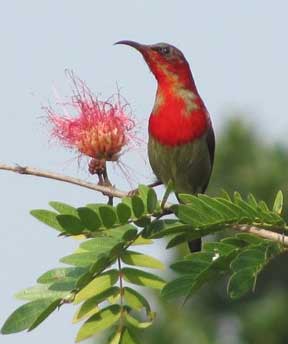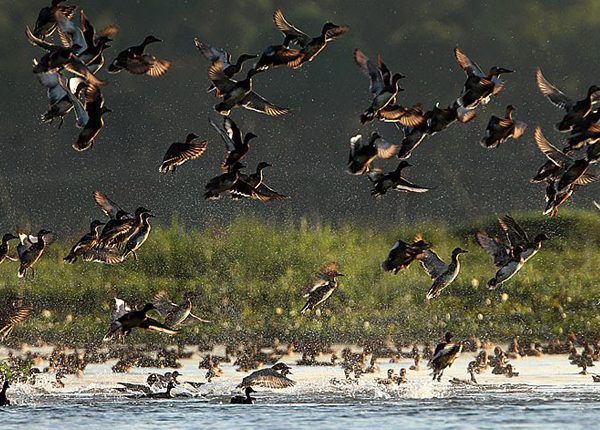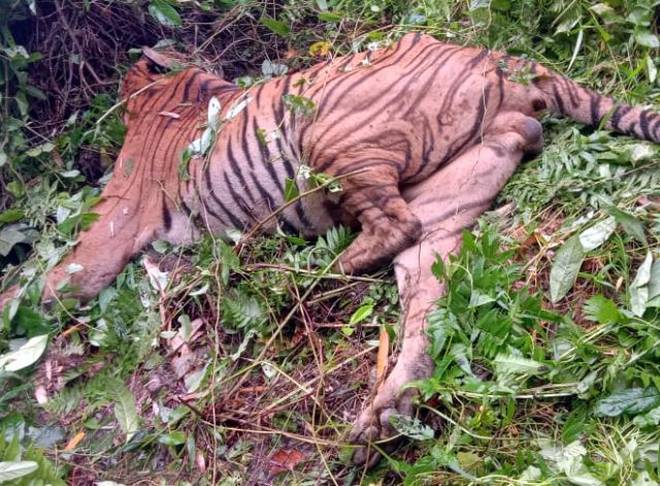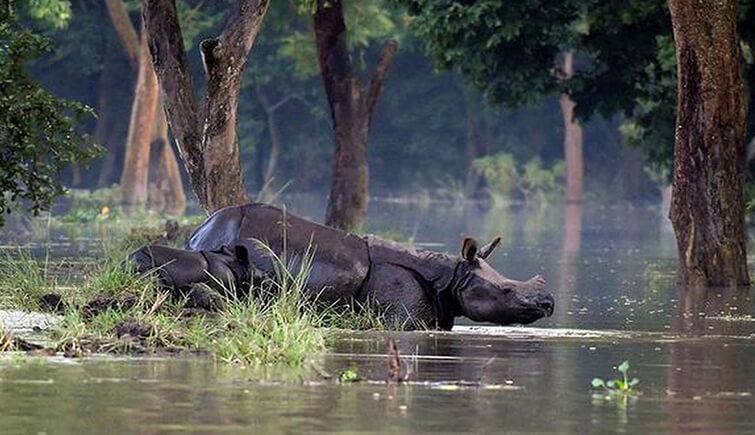
Highest Number of Waterfowls Recorded in Kaziranga National Park
By Siddhartha
Kaziranga National Park: Kaziranga National Park situated in Indian state of Assam – abode of world’s most one-horned rhinos has now become one of the highest for wildlife preserves in India with 96 species of wetlands birds.
The second waterfowl census, 2020 was conducted in the wetlands of Kaziranga National Park that lasts for two days. The team of total 24 bird expert enumerators and 35 volunteers coming from various organizations conducted this census. Approximately 41 different points were traced comprised of various water bodies inside the National park for the census. According to data released by District forest officer, a total of 21 major water bodies of the national park were included in the survey.

In the tow-day long survey, a total of 19,225 birds were counted in the national park. covering a total of 96 species belonging to 24 families. Out of the total counted birds, Bar-headed Geese that belongs to the Anatidae family counted for 6,181, followed by 1,557 numbers of Common Teal and 1,359 numbers of Northern Pintail, 1,233 numbers of Gadwall, 928 common coots, 825 lesser whistling ducks and others.
According to the avifauna experts, the data of the census is quite encouraging as the population of the wetland birds is reflecting rising trend in the national park.
The first waterfowl census was conducted in 2018 from December 19 to December to 20 had yielded 10,412 birds in Kaziranga covering 80 families from 21 families.
Additionally, the sighting of a Loner Tundra Swan was also spotted for the first time in a water body near Daflang that fall under Bagori Range of the National Park. However, it was not spotted during census hours, so it will not be included in the current census record. According to a report published, one of the bird experts quoted that “Tundra Swan Breeds in Arctic areas of Alaska, Canada and Russia.” These birds generally migrate during winter season in India and prefer marshes, large river, lakes and fields.


